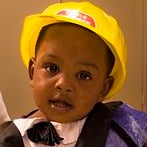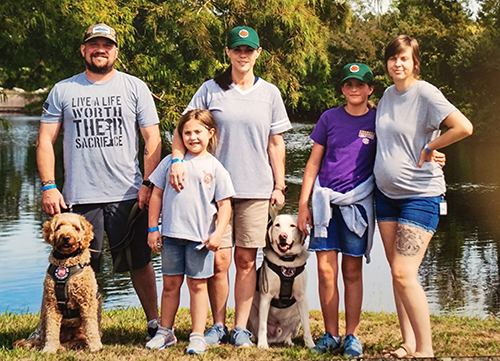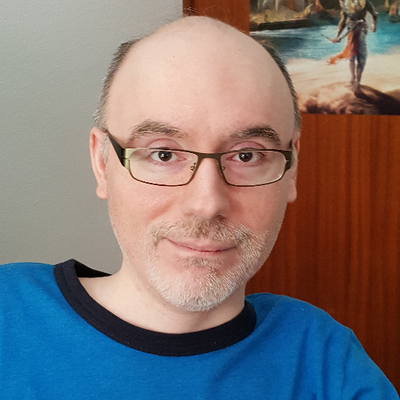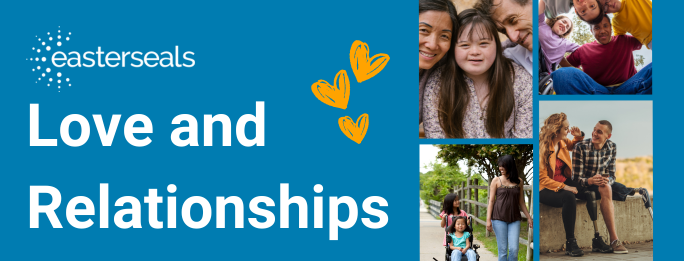
Living With Autism
What Exactly is Autism?
Autism Spectrum Disorder (ASD) or autism is a developmental disability considered the result of a neurological condition affecting normal brain function, development and social interactions. Children and adults with autism find it difficult or impossible to relate to other people in a meaningful way and may show restrictive and/or repetitive patterns of behavior or body movements. While great strides are being made, there is no known cause, or a known singular effective treatment for autism.
Opening the Door to Autism
There are five developmental disorders that fall under the Autism Spectrum Disorder umbrella and are defined by challenges in three areas: social skills, communication, and behaviors and/or interests.
Autistic Disorder -- occurs in males four times more than females and involves moderate to severe impairments in communication, socialization and behavior.
Asperger's Syndrome -- sometimes considered a milder form of autism, Asperger’s is typically diagnosed later in life than other disorders on the spectrum. People with Asperger's syndrome usually function in the average to above average intelligence range and have no delays in language skills, but often struggle with social skills and restrictive and repetitive behavior.
Rett Syndrome -- diagnosed primarily in females who exhibit typical development until approximately five to 30 months when children with Rett syndrome begin to regress, especially in terms of motor skills and loss of abilities in other areas. A key indicator of Rett syndrome is the appearance of repetitive, meaningless movements or gestures.
Childhood Disintegrative Disorder -- involves a significant regression in skills that have previously been acquired, and deficits in communication, socialization and/or restrictive and repetitive behavior.
Pervasive Developmental Disorder Not Otherwise Specified (PDD-NOS) -- includes children that do not fully meet the criteria for the other specific disorders or those that do not have the degree of impairment associated with those disorders.
Read the full glossary of ASD-related terminology. (Note: this link will take you away from Easterseals Southwestern Indiana's website)
Living with Autism
People with autism have challenges in the areas of communication, socialization and restricted/repetitive behaviors. A few examples:
Communication
Development of language is significantly delayed
Some do not develop spoken language
Experience difficulty with both expressive and receptive language
Difficulty initiating or sustaining conversations
Robotic, formal speech
Repetitive use of language
Difficulty with the pragmatic use of language
Socialization
Difficulty developing peer relationships
Difficulty with give and take of social interactions
Lack of spontaneous sharing of enjoyment
Impairments in use and understanding of body language to regulate social interaction
May not be motivated by social reciprocity or shared give-and-take
Restricted/Repetitive Behavior
Preoccupations atypical in intensity or focus
Inflexibility related to routines and rituals
Stereotyped movements
Preoccupations with parts of objects
Impairments in symbolic play
Learn About Signs and Symptoms
There is no single behavior that is always typical of autism or any of the autism spectrum disorders. Learn about the signs and symptoms.
There is Hope
Autism is a baffling, life-long disorder. And while there is no cause or cure, nor a known singular effective treatment, it is treatable. People with autism -- at any age -- can make significant progress through therapy and treatments, and can lead meaningful and productive lives.
However, experts agree that early diagnosis and early intervention are critical - because the earlier people with autism get help, the better their outcomes will be in the future.
Did you Know?
The annual cost of providing services for people with autism is $90 million, in 10 years that number is projected to be $200 - 400 billion. With early diagnosis and intervention, the overall cost of treatment can be reduced by two-thirds over an individual with autism’s lifetime.








 “Streaming is both accessible and not accessible,” Evans said. “The streaming part itself is accessible, in that it allows me to make my own schedule, and I can work it around my disabilities. However, the inaccessible part is the demand for content creators to constantly be networking, attending events and continuously pushing out content. I cannot attend events, and if I can they’re incredible stressful, so all my work networking has basically been done online, which thankfully is becoming a more acceptable side of content creation.”
“Streaming is both accessible and not accessible,” Evans said. “The streaming part itself is accessible, in that it allows me to make my own schedule, and I can work it around my disabilities. However, the inaccessible part is the demand for content creators to constantly be networking, attending events and continuously pushing out content. I cannot attend events, and if I can they’re incredible stressful, so all my work networking has basically been done online, which thankfully is becoming a more acceptable side of content creation.” “I must say over the years it has become less and less accessible for me,” Martínez said. “SMA (Spinal Muscular Atrophy) causes strength, endurance and mobility loss as time passes. I can’t use a physical keyboard as I used to, so it’s been years now with an on-screen keyboard. Voice dictation doesn’t work well for me due to my voice being inconsistent, not to mention my accent. In English it can go from totally wrong to acceptable. In Spanish, my native language, it works better.”
“I must say over the years it has become less and less accessible for me,” Martínez said. “SMA (Spinal Muscular Atrophy) causes strength, endurance and mobility loss as time passes. I can’t use a physical keyboard as I used to, so it’s been years now with an on-screen keyboard. Voice dictation doesn’t work well for me due to my voice being inconsistent, not to mention my accent. In English it can go from totally wrong to acceptable. In Spanish, my native language, it works better.” “What drew me to consulting was the opportunity to leverage my unique perspective as both an able-bodied and disabled gamer to improve the gaming experience for others,” Lane said. “I can share the frustrations I’ve faced as a disabled gamer and use that knowledge to advocate for better accessibility features. Companies and studios that I work with go the extra mile to make sure I have everything I need to succeed.”
“What drew me to consulting was the opportunity to leverage my unique perspective as both an able-bodied and disabled gamer to improve the gaming experience for others,” Lane said. “I can share the frustrations I’ve faced as a disabled gamer and use that knowledge to advocate for better accessibility features. Companies and studios that I work with go the extra mile to make sure I have everything I need to succeed.”



 So in my nightmare, I’m mad as a hornet when I see the green bus go by. I say to myself, “What the hell is this? I thought those inaccessible buses were long gone!”
So in my nightmare, I’m mad as a hornet when I see the green bus go by. I say to myself, “What the hell is this? I thought those inaccessible buses were long gone!”
